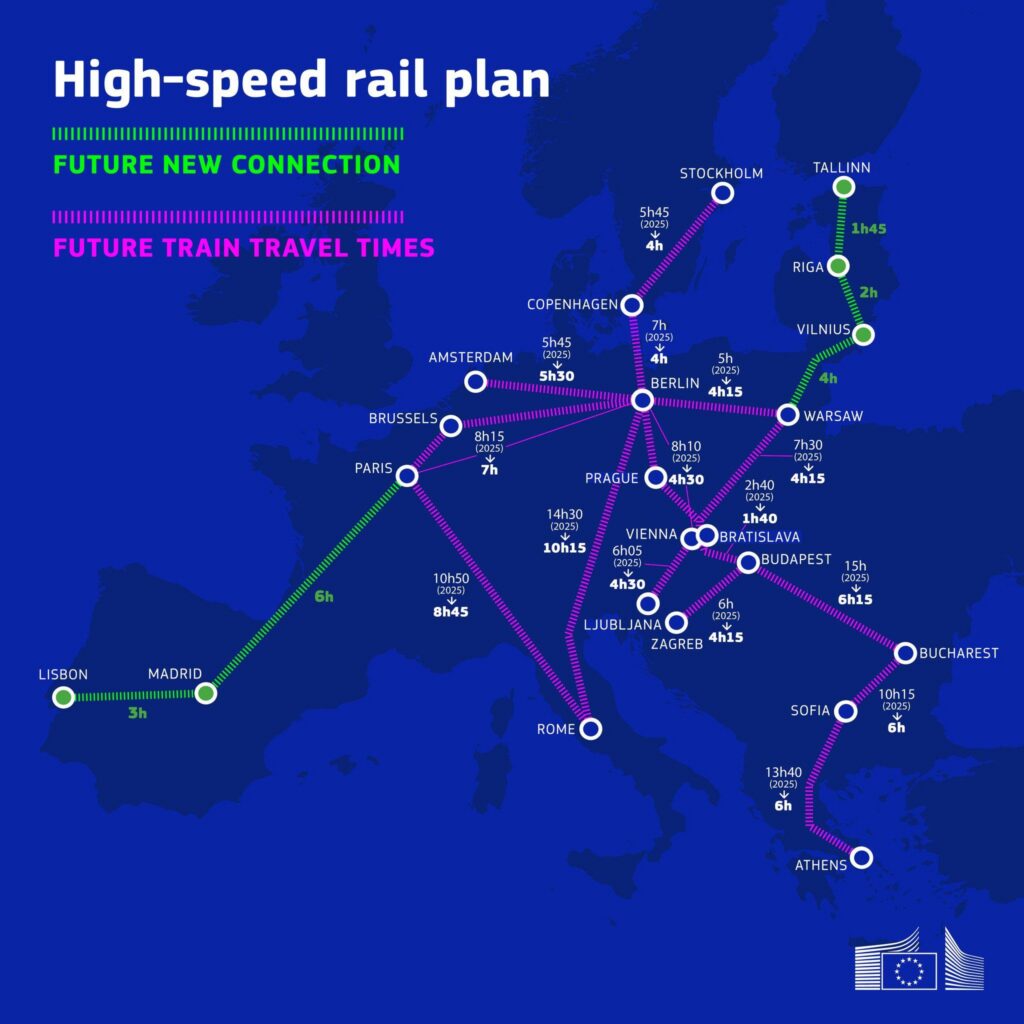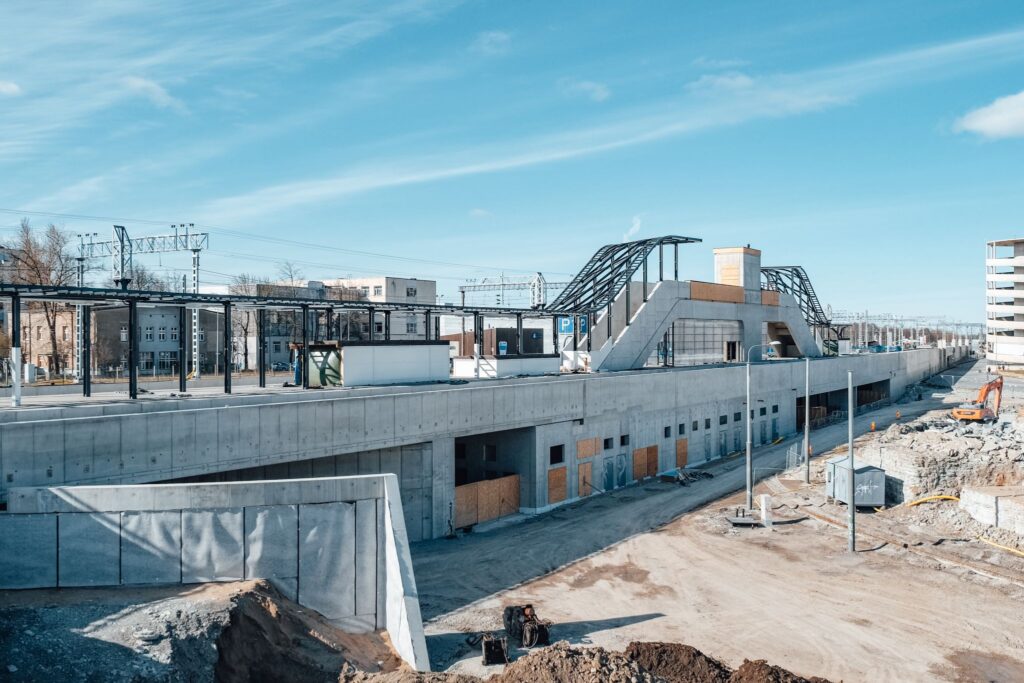As Rail Baltica shifts from the drawing board to the building site, Estonia and its Baltic neighbours are laying more than a railway: they are laying a track into Europe’s future.
What once felt like an audacious, almost utopian idea – a high-speed line threading through the Baltic states – has begun to take physical form. Across Estonia, Latvia and Lithuania, heavy machinery is now carving the route that will finally bind the region to Europe’s rail network.
What is Rail Baltica?
Rail Baltica is the Baltic region’s flagship infrastructure project: a new 1,435 mm standard-gauge railway linking Tallinn, Riga, Kaunas/Vilnius and, via Poland, the wider European network. Built for both passengers – at speeds of up to 249 km/h – and freight, it will draw the Baltic states decisively into the European rail system and away from the ageing Russian-gauge network they inherited.

For Estonia, the undertaking is vast: around 213 km of new double-track main line; international passenger terminals in Tallinn and Pärnu; multimodal freight hubs; a dozen regional stops; rolling-stock depots; and a landscape reshaped by bridges, overpasses and ecoducts. It marks a clear westward turn – technically, economically and politically – enabling seamless rail travel from Estonia into the heart of Europe and offering both faster journeys for passengers and a cleaner, more efficient corridor for freight.
Yet the project’s significance extends well beyond economics. In recent years, Baltic leaders have increasingly cast Rail Baltica as a strategic asset. The line is designed to support the EU’s “military mobility” ambitions, ensuring that people, goods and, if required, defence resources can move swiftly across the region. For Estonia, Rail Baltica is therefore as much a geopolitical statement as an infrastructural one.
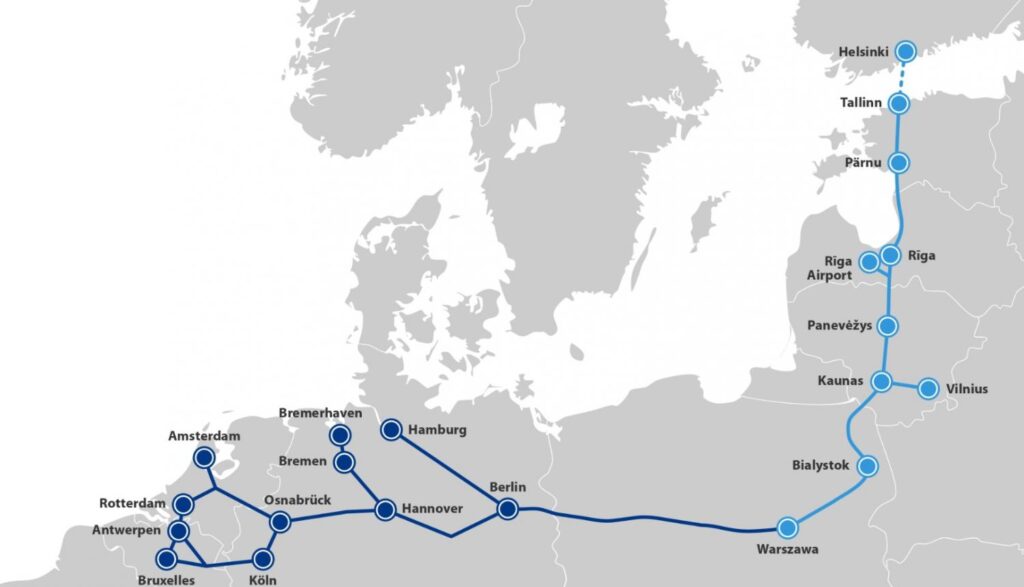
Financing a scheme of this scale was always going to be exacting. In 2024, the European Commission and the Baltic joint venture RB Rail secured an additional €1.2 billion from the EU’s Connecting Europe Facility, including roughly €370 million for Estonia. A further €295.5 million followed the next year, again with a significant share directed to Estonia.
In July 2025, the Commission adopted a formal decision setting milestones for completion by 2030 – a clear signal of Rail Baltica’s central place in the EU’s Trans-European Transport Network and its wider drive towards greener mobility.
The proposed Pärnu terminal of Rail Baltica.
Progress and costs
The most tangible shift came in June 2025, when the first platform of Tallinn’s Ülemiste Linda Terminal opened to passengers – the inaugural operational fragment of the future network.
Earlier in the year, two international consortia signed what is now the largest infrastructure contract in Estonia’s history, covering the entire passenger main line between Tallinn and Pärnu. With those agreements, the full Estonian section of the passenger route moved under contract. According to RB Rail AS, the project’s joint coordinator, nearly half of the line will be either under construction or construction-ready by the end of 2025.
In Pärnu and across the south, earthworks and bridge foundations are progressing at pace, marking the most intensive phase yet. The Ülemiste terminal, sitting beside Tallinn Airport, is being shaped into a multimodal gateway that will knit together air, rail and urban transport – a future front door to Europe.
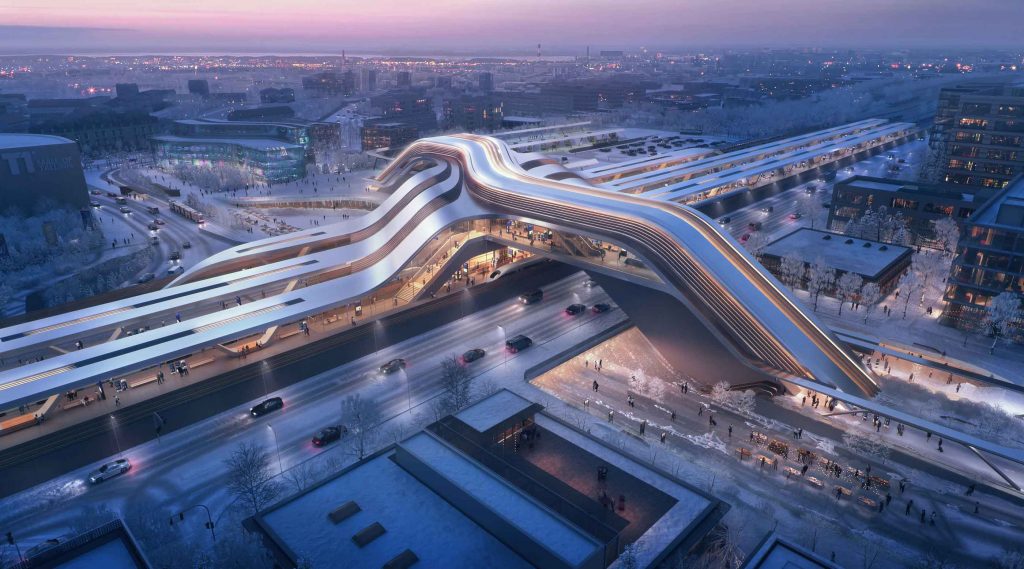
Yet the road to 2030 is steep. Costs have surged far beyond early projections, rising from roughly €6 billion a decade ago to potentially more than €20 billion today. Inflation, shortages of key materials and the complexities of coordinating three national rail authorities have all driven the overruns.
Latvia has faced the most visible delays, with suggestions that its section may not be fully ready before 2035. In Estonia, officials at the Ministry of Climate concede that while the line should be completed by 2030, some stretches may require phased delivery or temporary single-track operation.
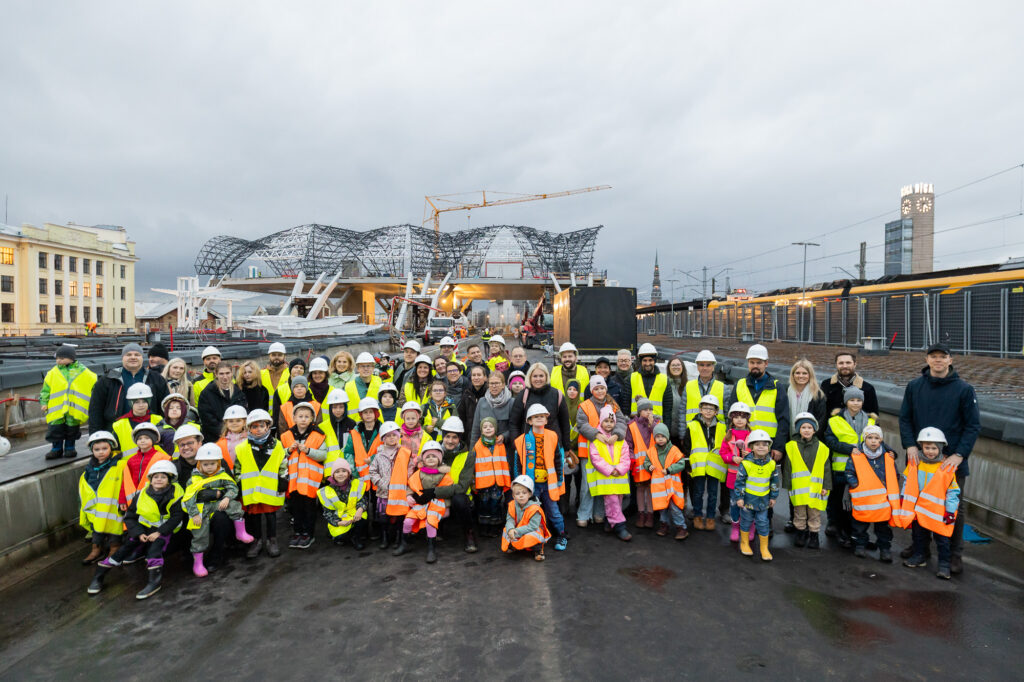
Even so, momentum is building. Governments remain publicly committed, and Brussels has made clear that sustained EU funding hinges on continued progress on the ground. For Estonia, keeping to schedule is both a national priority and a measure of its regional reliability.
Economic promise for Estonia
For Estonian businesses and regions, Rail Baltica is already yielding dividends. The scale of current contracts has lifted construction employment, increased demand for materials and prompted fresh planning efforts in towns along the route. Pärnumaa, Raplamaa and Harjumaa are all witnessing new infrastructure – bridges, road links and ecological corridors that will outlast the railway itself.
Once operational, the line will cut the Tallinn–Riga journey to around two hours, while Tallinn–Warsaw will be reduced to just over six. Freight from Estonia’s ports, particularly Muuga, will gain a direct, electrified artery into Central Europe, opening new trade opportunities and easing pressure on roads – with clear environmental gains.
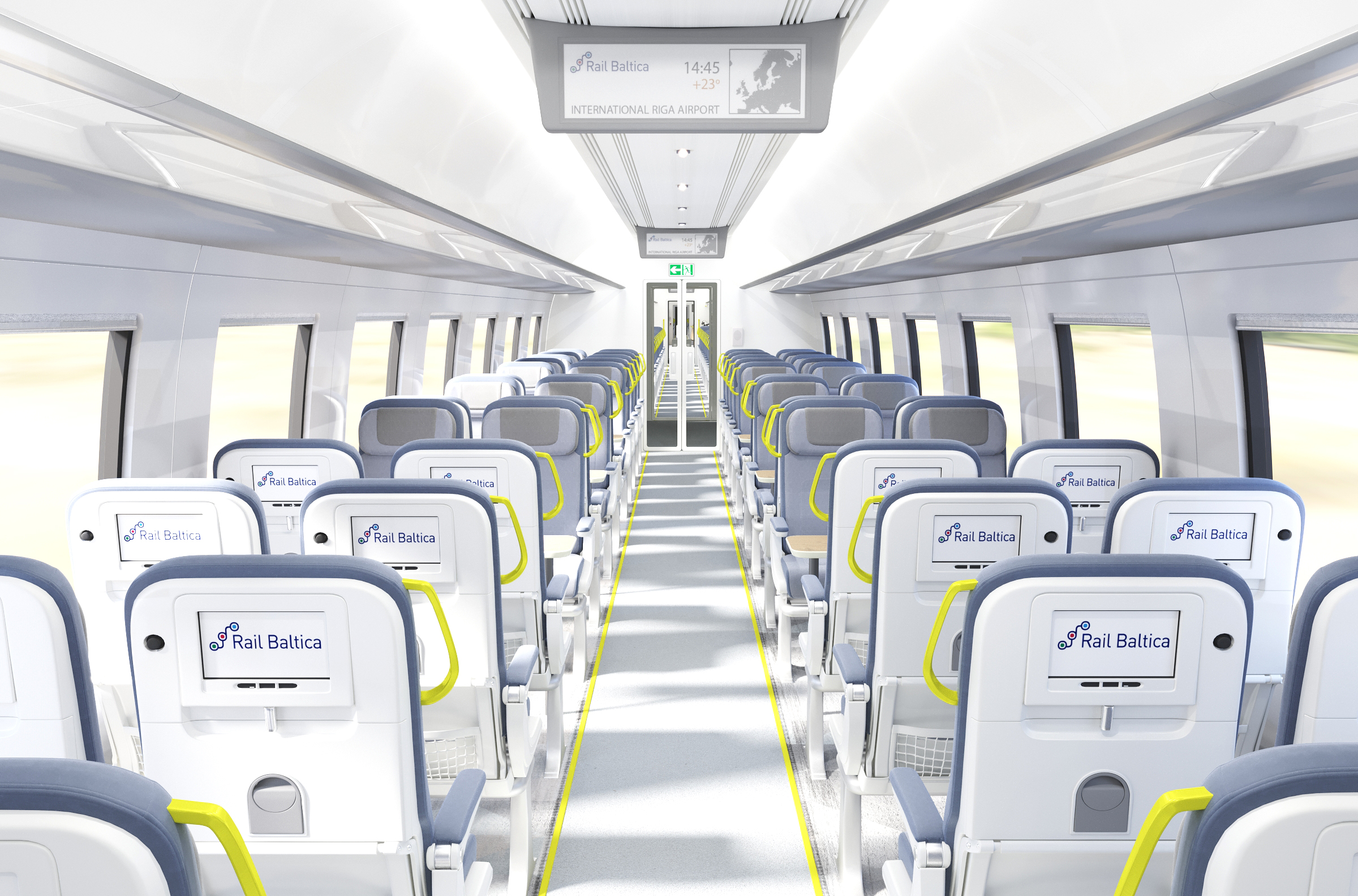
The next few years will determine whether this vast undertaking can be delivered on time and to the standard promised. Its success will hinge on sustained investment, deft coordination and political resolve across all three Baltic states. If realised as planned, Rail Baltica will not merely reshape travel; it will recast the region’s self-image – faster, better connected and assuredly European.
When the first train finally pulls out of Tallinn on the new standard-gauge line, it will be carrying far more than passengers. It will be carrying the idea of a Baltic region that has, at long last, laid a direct track into Europe’s future.
